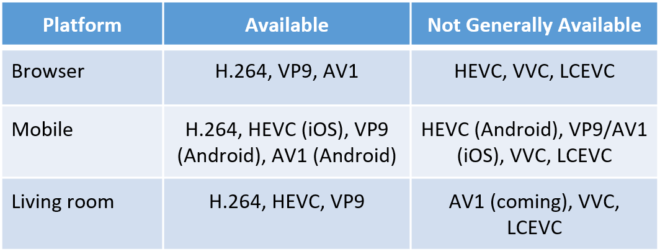Beginner’s Guide to Codecs
By Jennifer P
Streaming Learning Center recently posted an article going over an introduction to video codecs.
Video codecs are compression technologies that reduce the bitrate of digital video to manageable sizes. Video codecs are not only central to streaming, but they’re also integral to digital camcorders, video editing, contribution, and broadcast.
Contents:
- What does codec mean?
- Where do codecs come from?
- What the heck do all these initials mean?
- How much do codecs cost and who pays?
- Why are there multiple codecs from different developers?
- Which codecs are essential and why?
- Why do publishers start supporting new codecs?
- How are codecs compared?
- How is codec quality measured?
- Why does encoding time matter?
- Why do decoding requirements matter?
- How do codecs get adapted?
- When do you need to care about new codecs?
What does Codec mean?
Codec is the contraction of enCOde/DECode. That’s because codecs work by encoding the video for distribution or storage and decompressing for playback or other use.
Where do Codecs come from?
Codecs come from two sources as shown in table below; Standard-based codecs are created by standard-setting organizations like the Motion Pictures Expert Group (MPEG) and the International Telecommunications Union (ITU). In fact, the H.264/AVC, H.265/HEVC, and H.266/VVC codecs have two names because they were created in concert by MPEG, which called them AVC, HEVC, VVC, and the ITU (H.264, H.265, H.266).

What the heck do all these initials mean?
AVC – Advanced Video Coding
HEVC – High-Efficiency Video Coding
VVC – Versatile Video Coding
EVC – Essential Video Coding
LCEVC – Low Complexity Enhancement Video Coding
AV1 – AOMedia Video 1
Read the full article from Streaming Learning Center HERE

